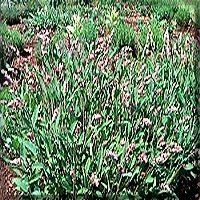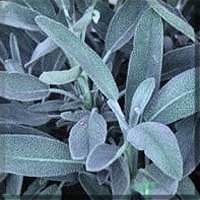

Salvia officinalis


Salvia officinalis
Other Names - Garden Sage, Scarlet Sage, Dalmation Sage, Meadow Sage, True Sage
Description - Sage is an evergreen shrub with a distinctive fragrance that may grow to a height of almost three feet, and it thrives in rich, well-drained soil in sunny locations. It is native to the Mediterranean region and was introduced to North America in the seventeenth century, where it continues to grow throughout the temperate regions. Sage is a member of the multi-species Salvia genus, and despite the fact that any herb of this genus may be called Sage, there are significant differences in medicinal components in the tops and roots that influence their uses. Salvia officinalis (Garden Sage) and Salvia miltiorrheza (Salvia Root/Red Root Sage) are in no way similar to another member of the Sage genus, Salvia divinorum, which is a dangerous psychoactive plant and subject to regulation as a controlled substance under several states’ drug regulation statutes. In an 1833 publication, Russian botanist, Alexander von Bunge (1803-1890), gave the plant its botanical genus, Salvia, which is translated from the Latin word, salvere, meaning "to save" or "to cure," as Sage enjoyed the reputation of being able to cure a multitude of ills. The many varieties of Sage possess virtually all the same properties. The Romans, who named this robust herb, held it in the highest regard and thought it to be the herbal savior of mankind. Those ancients considered it a sacred herb and believed that its growth in one's garden would promote immortality. Sage's botanical name, Salvia officinalis, is derived from the Latin, salvere, which means "to save" or "to cure," and it enjoyed the reputation of being one of those herbs used to cure a multitude of ills. An old Arab proverb asked, "How shall a man die who has Sage in his garden?" - a reference to the plant's power of immortality. Traditional Chinese medicine mentioned the use of Sage in 206 B.C., to increase physical strength, mental equanimity and alertness, and body heat. It was so valued in China in the seventeenth century that Dutch merchants discovered the Chinese would trade three chests of their China tea for one chest of Sage leaves. Native Americans massaged their gums and teeth with Sage and also used it for healing skin sores. Included in Sage's chemical constituents are beta-carotene, essential acids, essential oils (thujone, camphor and eucalyptol), flavonoids, saponin, tannins, minerals, B-vitamins and Vitamins B and C.
Pharmacology - The main chemical components of sage oil are:
Medicinal Uses - Sage is a mild tonic that fortifies a generally debilitated nervous system. Instead of sedating the nervous system as some nervine herbs do, it actually stimulates the central nervous system, strengthening it to reduce excess nervous energy. This mild tonic quiets the nerves, relieves spasms, helps induce sleep and combats depression, mental exhaustion, trembling and nervousness. It has been used to calm seasickness, and traditional herbalists even thought it useful in treating certain forms of insanity.
The medicinal uses of Sage abound. The antiseptic properties in Sage are useful in treating intestinal and respiratory infections, and the essential oil, heated in a vaporizer, will disinfect a sick room. The herb has also been effective in breaking fevers, reducing cold symptoms, treating dysentery, and expelling worms and parasites.
Sage's cosmetic uses are numerous. It is used in baths as a relaxant and to soothe sore muscles, in shampoos to cleanse the scalp and stimulate hair growth, in soaps to cleanse and restore ageing skin, and in hair rinses to promote shine (especially in dark hair).
Recommended Dosage - Take two (2) to three (3) capsules, two (2) times each day with water at mealtimes.
Contraindications - Sage is not recommended for pregnant or nursing women, nor should it be taken by individuals with seizure disorders. Sage may interfere with the absorption of iron or other minerals in the body. Those who are allergic to members of the mint family (thyme, basil, sage, marjoram, etc.), should avoid this herb.